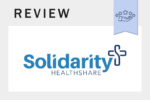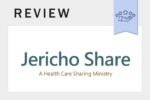This post may contain affiliate links, which means if you enroll through my link, I’ll receive a small commission at no extra cost to you.

Navigating prescription drug costs without insurance can be challenging, but there are several effective strategies to reduce expenses. This guide will explore various methods to manage and lower your prescription drug costs without insurance and provide practical tips for accessing affordable medications. Let’s dive into the best ways to cut down on these expenses while maintaining your health.
Understanding Prescription Drug Costs Without Insurance
Without the safety net of insurance, prescription drug costs can be a significant financial burden. However, there are numerous resources and strategies available to help mitigate these costs. By being proactive and informed, you can find ways to make your medications more affordable.
How to Reduce Prescription Drug Costs
- Generic Medications
Opting for generic medications instead of brand-name drugs can lead to substantial savings. Generic drugs contain the same active ingredients and are just as effective as their brand-name counterparts but at a fraction of the cost.
- Comparison Shopping
Prices for prescription drugs can vary significantly between pharmacies. Use online tools like GoodRx, RxSaver, Blink Health, or The Mark Cuban Cost Plus Drug Company to compare prices and find the best deals in your area. These platforms can provide digital coupons that further reduce costs.
“Everyone should have safe, affordable medicines with transparent prices.”
-Mark Cuban
- Discount Cards and Coupons
Utilize prescription discount cards and coupons, which can be obtained from websites like GoodRx, SingleCare, and RxSaver. These cards and coupons are free and can offer significant discounts at participating pharmacies.
- Patient Assistance Programs
Many pharmaceutical companies offer patient assistance programs (PAPs) for individuals without insurance. These programs provide free or low-cost medications to eligible patients. Check the manufacturer’s website of your medication to see if they offer such a program.
- Charitable Pharmacies
Charitable pharmacies provide medications at reduced prices or even for free to qualifying individuals. Organizations like Dispensary of Hope and Charitable Pharmacies of America can connect you with these resources.
- Bulk Purchasing and Mail-Order Pharmacies
Buying medications in bulk or using mail-order pharmacies can reduce costs. These services often provide a 90-day supply at a lower price per dose compared to a 30-day supply. Many large retail chains like Walmart and CVS offer mail-order services.
Strategies for Specific Situations

1. Chronic Conditions
For chronic conditions requiring long-term medication, consider enrolling in disease-specific programs. For example:
- HIV Prevention: The Ready, Set, PrEP program offers free HIV prevention medication.
- Birth Control: Organizations like Planned Parenthood provide free or low-cost birth control.
2. Emergency Situations
In emergencies, it’s crucial to know your options for immediate access to affordable medications. Community health centers often have sliding scale fees based on income and can provide necessary medications at reduced costs.
3. High-Cost Speciality Drugs
For high-cost specialty medications, specialty pharmacies can be a valuable resource. These pharmacies are equipped to handle expensive and complex medications, often providing financial assistance and support programs to help manage costs.
Additional Tips to Manage Prescription Drug Costs
- Talk to Your Doctor
Always discuss your financial concerns with your healthcare provider. They may be able to prescribe a less expensive medication or offer free samples to get you started.
- Use Over-the-Counter (OTC) Alternatives
Some prescription medications have effective OTC alternatives. Consult your doctor to see if an OTC option might be suitable for your condition.
- Check for Local and State Programs
Many states offer assistance programs for residents without insurance. These programs can provide medications at reduced costs or for free. Research what’s available in your state.
Managing Prescription Drug Costs Without Insurance: Real-Life Examples
Example 1: Sarah’s Experience
Sarah, a single mother without insurance, struggled with the high cost of her diabetes medication. She discovered a patient assistance program through the drug manufacturer’s website, which provided her medication at no cost. Additionally, she used a discount card from GoodRx to save on other prescriptions, significantly reducing her overall expenses.
Example 2: John’s Story
John needed a high-cost specialty medication for his condition. By using a specialty pharmacy, he accessed financial assistance programs that lowered his out-of-pocket costs. He also received comprehensive support from the pharmacy staff, who helped him manage his medication regimen.
Conclusion
By following these tips and staying informed, you can take control of your prescription drug costs without insurance and save money on your healthcare costs.
Managing prescription drug costs without insurance can be daunting, but with the right strategies, you can significantly reduce your expenses. By leveraging resources like generic medications, comparison shopping, discount cards, patient assistance programs, and charitable pharmacies, you can access the medications you need at a more affordable price.
Being proactive, communicating with your healthcare provider, and exploring all available options are key steps in managing prescription drug costs effectively. Whether you’re dealing with chronic conditions, emergencies, or high-cost specialty drugs, these strategies can help you navigate the financial challenges and ensure you receive the care you need.
Health shares are not insurance and do not offer insurance coverage. Membership in a health share does not guarantee the payment or reimbursement of medical expenses. Each organization operates under its own membership guidelines, which determine what expenses may be eligible for sharing. This publication is for informational purposes only and is not provided by an insurance company. For state-specific notices and full program details, please visit the respective health share’s official website.





Leave a Reply